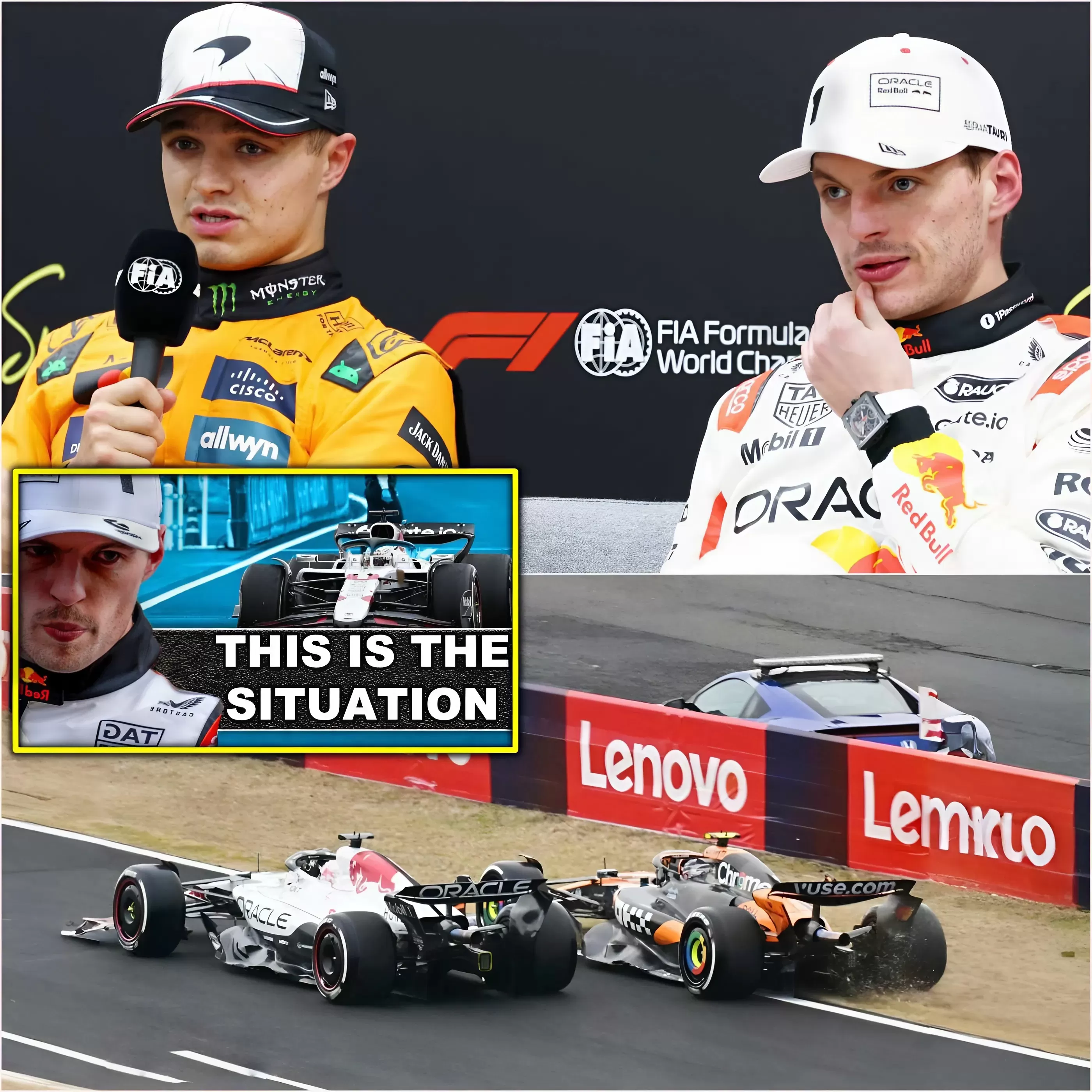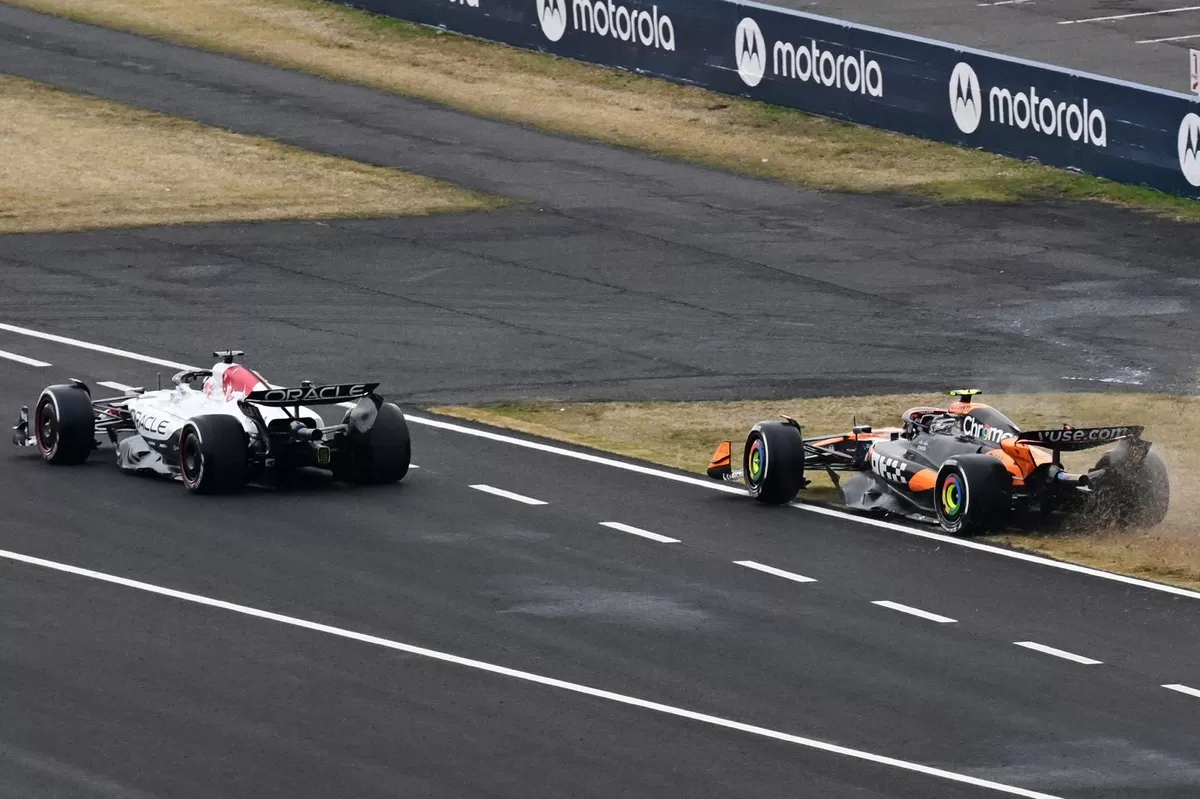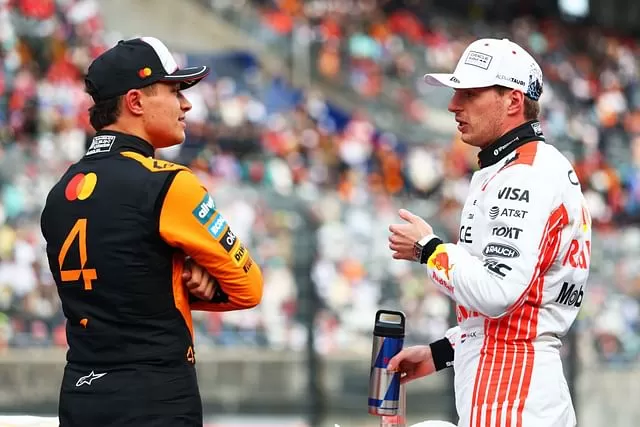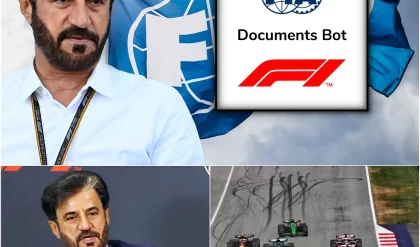Reason Behind No-Penalty Decision After Verstappen-Norris Incident at Japanese Grand Prix Unveiled

In a thrilling moment at the Japanese Grand Prix, Formula 1 fans witnessed a near-miss between reigning champion Max Verstappen and McLaren’s Lando Norris, sparking debates over whether penalties should have been issued. The incident, which unfolded in the pit lane, saw Norris nearly collide with Verstappen as they jostled for position exiting their respective pit stops. Despite the intensity of the encounter, no penalties were handed out, leaving viewers questioning the stewards’ decision. A closer look at the FIA Sporting Code and the dynamics of the event reveals why both drivers walked away unscathed by disciplinary action.

The drama began when Verstappen and Norris pitted on the same lap. Verstappen, however, endured a slower stop, allowing Norris a golden opportunity to seize the lead. As Norris was released by his McLaren crew, he pulled alongside Verstappen, the two cars racing toward the pit exit in a high-stakes showdown. Verstappen held a slight edge with his front tires ahead, but Norris, undeterred, pushed forward, nearly drawing level. The McLaren driver ran out of tarmac, veering onto the grass and narrowly avoiding a crash. While the stewards took note of the incident, no further investigation followed—a decision rooted in the technicalities of pit lane regulations.

According to the FIA Sporting Code, priority in the pit lane hinges on a clear hierarchy: drivers in the fast lane take precedence over those emerging from the working lane. During the incident, Verstappen occupied the fast lane, while Norris was rejoining from the working lane after his stop. The rules stipulate that cars in the working lane must yield and merge safely behind those already in the fast lane, without causing unnecessary obstruction. Verstappen’s position gave him the right of way, and despite Norris’s bold move, the Dutch driver was not forced to take evasive action. This key detail explains why Verstappen faced no scrutiny—his actions aligned with the regulations, and he maintained control of his rightful lane.

But what about Norris? Could his aggressive exit be deemed an unsafe release, a violation that has warranted penalties in the past? Historically, unsafe releases occur when a driver moves into the fast lane prematurely, endangering mechanics, equipment, or other competitors. The Sporting Code defines such infractions explicitly: a car must not be released in a way that jeopardizes pit lane personnel or hinders another driver unnecessarily. In this case, the incident occurred at the end of the pit lane, far from mechanics or equipment. Crucially, Verstappen’s progress remained unimpeded—Norris’s maneuver, while daring, didn’t force the Red Bull driver to swerve or brake. Without a clear breach of the rules, Norris escaped punishment, his gamble falling just within the bounds of legality.
The Verstappen-Norris clash underscores the fine line drivers walk in the high-pressure world of Formula 1, where split-second decisions can make or break a race. The stewards’ restraint reflects a commitment to the letter of the law, prioritizing technical compliance over the spectacle of the moment. For fans, it’s a reminder of the intricate rules governing the sport, often invisible amid the roar of engines and the rush of adrenaline. While the incident added spice to the Japanese Grand Prix, it concluded without penalties, leaving Verstappen and Norris free to fight another day. As the season unfolds, expect more edge-of-the-seat battles—and perhaps more debates—under the watchful eyes of the FIA.





